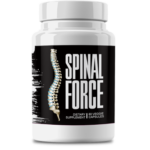This Village-Made Chinese Pain Reliever Eliminates Back And Joint Pain!
Finding the Best Thing for Knee Pain: A Step-by-Step Approach

Understanding Knee Pain
Knee pain is a common ailment affecting people of all ages. It can arise from various factors, including injuries, medical conditions, and wear-and-tear over time. Understanding the root cause of knee pain is essential for effective treatment. By identifying the symptoms and seeking proper diagnosis, individuals can embark on a tailored treatment plan to alleviate discomfort and improve mobility. This comprehensive approach ensures that the underlying issue is addressed, preventing further complications and promoting long-term knee health. In this blog post, we will explore the best thing for knee pain through a step-by-step approach.
Common Causes of Knee Pain
Knee pain can result from multiple causes, each necessitating a specific treatment strategy. Common causes include osteoarthritis, ligament injuries, meniscus tears, and tendinitis. Osteoarthritis is a degenerative joint disease that commonly affects older adults, while ligament injuries often occur in athletes. Meniscus tears can result from sudden twists or turns, and tendinitis is usually a result of overuse. Recognizing these causes is crucial for implementing the best thing for knee pain, as each condition requires a unique treatment plan to effectively alleviate symptoms and promote healing.
Symptoms to Watch For
Recognizing the symptoms of knee pain can help in early diagnosis and treatment. Common symptoms include swelling, stiffness, and difficulty in moving the knee. Pain can range from a dull ache to sharp, stabbing sensations, depending on the underlying cause. In some cases, the knee may feel unstable or weak, making it challenging to bear weight. By paying attention to these symptoms and seeking medical advice early, individuals can prevent the condition from worsening and explore various treatment options to find the best thing for knee pain.
Diagnosing Knee Pain
Accurate diagnosis is the first step towards effective treatment. Medical professionals use a combination of physical examinations, imaging tests, and patient history to diagnose knee pain. X-rays, MRIs, and CT scans provide detailed images of the knee structure, helping doctors identify the cause of pain. Blood tests may also be conducted to rule out infections or autoimmune conditions. A precise diagnosis is essential for developing a targeted treatment plan, ensuring that individuals receive the most appropriate care for their specific condition, ultimately leading to the best thing for knee pain relief.
The Importance of Early Intervention
Why Early Treatment Matters
Early intervention is crucial in managing knee pain effectively. Prompt treatment can prevent the condition from deteriorating and reduce the risk of long-term damage. Early treatment often involves a combination of rest, physical therapy, and medication to manage symptoms and promote healing. By addressing the issue early, individuals can avoid more invasive procedures and enjoy a quicker recovery. Additionally, early intervention can improve the overall quality of life, allowing individuals to maintain their daily activities without significant discomfort.
Long-Term Impact of Untreated Knee Pain
Neglecting knee pain can lead to severe consequences. Chronic pain can develop, making it difficult to perform everyday tasks. Untreated knee pain can also cause compensatory issues, where other parts of the body, such as the hips and lower back, are affected. Over time, this can result in a cascade of problems, significantly impacting mobility and quality of life. Therefore, seeking timely treatment is imperative to prevent these long-term complications and ensure that individuals can continue to lead active and healthy lives.
Seeking Professional Help
Consulting a healthcare professional is essential for effective knee pain management. Specialists such as orthopedic surgeons, physical therapists, and rheumatologists can offer expert advice and treatment options. They can perform thorough evaluations to determine the cause of knee pain and recommend a personalized treatment plan. Professional help ensures that individuals receive evidence-based care, increasing the likelihood of successful outcomes. By seeking professional guidance, individuals can make informed decisions about their treatment, ultimately finding the best thing for knee pain.
Non-Surgical Treatments for Knee Pain
Physical Therapy and Exercise
Physical therapy is a cornerstone of non-surgical knee pain treatment. It involves targeted exercises to strengthen the muscles around the knee, improve flexibility, and enhance overall joint function. A physical therapist will design a customized exercise regimen that addresses the specific needs of each patient. Regular physical therapy sessions can significantly reduce pain and improve mobility, making it one of the best things for knee pain. Additionally, incorporating low-impact exercises such as swimming and cycling can further support knee health and prevent future pain.
Over-the-Counter Medications
Over-the-counter (OTC) medications can provide immediate relief for knee pain. Nonsteroidal anti-inflammatory drugs (NSAIDs) such as ibuprofen and naproxen help reduce inflammation and alleviate pain. Acetaminophen is another option for pain relief, though it does not address inflammation. These medications are easily accessible and can be used as part of a broader treatment plan. However, it is essential to use them as directed and consult a healthcare professional to avoid potential side effects and interactions with other medications.
Topical Treatments
Topical treatments offer a non-invasive option for managing knee pain. Creams, gels, and patches containing analgesics or NSAIDs can be applied directly to the skin over the affected area. These treatments provide localized pain relief without the systemic side effects associated with oral medications. Capsaicin cream, derived from chili peppers, is another effective option that works by reducing the transmission of pain signals. Topical treatments can be used alongside other therapies to enhance pain relief and improve overall knee function.
Knee Braces and Supports
Knee braces and supports can provide stability and alleviate pain. They are particularly useful for individuals with ligament injuries or arthritis. Braces come in various designs, from simple sleeves to more complex hinged supports. They work by reducing stress on the knee joint, providing compression, and enhancing proprioception. Wearing a knee brace during physical activities can prevent further injury and promote healing. It is essential to choose the right type of brace based on the specific condition and consult a healthcare professional for proper fitting and usage instructions.
Home Remedies and Lifestyle Changes
Diet and Nutrition for Joint Health
A balanced diet plays a crucial role in maintaining joint health and managing knee pain. Consuming foods rich in omega-3 fatty acids, such as fish and flaxseeds, can help reduce inflammation. Antioxidant-rich fruits and vegetables, like berries and leafy greens, protect the joints from oxidative stress. Additionally, ensuring adequate intake of calcium and vitamin D supports bone health. Staying hydrated is equally important for maintaining joint lubrication. By incorporating these dietary changes, individuals can support overall joint health and alleviate knee pain.
Effective Home Exercises
Home exercises can complement professional treatments and enhance knee pain relief. Stretching exercises, such as hamstring and calf stretches, improve flexibility and reduce stiffness. Strengthening exercises, like leg lifts and mini squats, target the muscles around the knee, providing better support. Low-impact activities, such as yoga and tai chi, promote gentle movement and enhance balance. Consistency is key, and performing these exercises regularly can lead to significant improvements in knee pain and function. Consulting a physical therapist for personalized guidance is recommended.
Weight Management Tips
Maintaining a healthy weight is essential for reducing knee pain. Excess weight puts additional stress on the knee joints, exacerbating pain and inflammation. Adopting a balanced diet and engaging in regular physical activity can help achieve and maintain a healthy weight. Portion control, mindful eating, and choosing nutrient-dense foods are effective strategies for weight management. Additionally, seeking support from healthcare professionals, such as dietitians and fitness trainers, can provide personalized guidance and motivation. By managing weight, individuals can significantly reduce knee pain and improve overall joint health.
Advanced Medical Treatments
Prescription Medications
For more severe cases of knee pain, prescription medications may be necessary. Doctors may prescribe stronger NSAIDs, corticosteroids, or disease-modifying antirheumatic drugs (DMARDs) depending on the underlying cause. These medications aim to reduce inflammation, manage pain, and slow the progression of conditions like rheumatoid arthritis. It is crucial to follow the prescribed dosage and attend regular check-ups to monitor effectiveness and potential side effects. Prescription medications can be a vital component of a comprehensive treatment plan, providing significant relief for those struggling with chronic knee pain.
Injections and Infusions
Injections and infusions offer targeted relief for knee pain. Corticosteroid injections can reduce inflammation and provide pain relief for several months. Hyaluronic acid injections aim to lubricate the knee joint, improving mobility and reducing pain. Platelet-rich plasma (PRP) therapy and stem cell injections are emerging treatments that promote tissue regeneration and healing. Infusions of biologic medications are used for autoimmune conditions like rheumatoid arthritis. These advanced treatments are typically administered by specialists and can provide significant relief when other therapies have been insufficient.
Alternative Therapies
Alternative therapies can complement traditional treatments and provide additional relief for knee pain. Acupuncture involves inserting thin needles into specific points on the body to reduce pain and promote healing. Chiropractic care focuses on aligning the musculoskeletal system to improve joint function. Massage therapy can alleviate muscle tension and improve blood flow to the affected area. These therapies may not be suitable for everyone, but they can be beneficial when used alongside conventional treatments. It is essential to consult healthcare professionals before pursuing alternative therapies to ensure safety and effectiveness.
When Surgery is Necessary
Types of Knee Surgeries
When conservative treatments fail, surgery may be necessary to address knee pain. Common surgical options include arthroscopy, partial knee replacement, and total knee replacement. Arthroscopy is a minimally invasive procedure that allows surgeons to diagnose and treat joint issues using a small camera and instruments. Partial knee replacement involves replacing only the damaged part of the knee, while total knee replacement replaces the entire joint. The choice of surgery depends on the severity and cause of knee pain, and a thorough evaluation by an orthopedic surgeon is essential.
Preparing for Knee Surgery
Preparation is key to ensuring a successful outcome from knee surgery. Preoperative assessments, including blood tests and imaging, help evaluate the patient's overall health. Patients may need to adjust medications, stop smoking, and optimize their weight before surgery. Physical therapy may be recommended to strengthen the muscles around the knee. Understanding the surgical procedure and postoperative care can alleviate anxiety and ensure a smoother recovery. By following medical advice and preparing adequately, patients can enhance their chances of a successful surgery and improved knee function.
Recovery and Rehabilitation
Recovery and rehabilitation are critical components of knee surgery success. Postoperative care includes pain management, wound care, and physical therapy. Early mobilization is encouraged to prevent complications such as blood clots and stiffness. Physical therapy focuses on restoring strength, flexibility, and range of motion. Adhering to the rehabilitation plan and attending follow-up appointments are essential for monitoring progress and addressing any concerns. Recovery times vary, but with dedication and support, patients can achieve significant improvements in knee function and quality of life.
Preventing Future Knee Pain
Daily Habits for Knee Health
Adopting healthy daily habits can prevent future knee pain and maintain joint health. Regular exercise, including strength training and flexibility exercises, supports knee stability and function. Avoiding high-impact activities that strain the knees can reduce the risk of injury. Proper body mechanics, such as bending the knees when lifting heavy objects, can prevent unnecessary stress on the joints. Staying hydrated and maintaining a balanced diet also contribute to joint health. By incorporating these habits into daily routines, individuals can protect their knees and reduce the likelihood of future pain.
Proper Footwear and Orthotics
Wearing proper footwear is essential for knee health. Shoes with adequate arch support, cushioning, and a proper fit can reduce strain on the knees. High heels and poorly fitting shoes should be avoided. Orthotic inserts can provide additional support and correct gait abnormalities that contribute to knee pain. Custom orthotics, prescribed by healthcare professionals, are tailored to individual needs and can significantly improve joint alignment and function. Investing in quality footwear and orthotics can prevent knee pain and promote overall joint health.
Importance of Regular Check-Ups
Regular check-ups with healthcare professionals are crucial for maintaining knee health. Routine assessments allow for early detection and management of potential issues. Healthcare providers can monitor joint health, recommend preventive measures, and adjust treatment plans as needed. For individuals with a history of knee problems, regular visits to specialists such as orthopedic surgeons or rheumatologists are essential. By staying proactive and attending regular check-ups, individuals can manage knee health effectively and prevent future complications.
Real-Life Success Stories
Case Study: Overcoming Chronic Knee Pain
Jane, a 55-year-old avid hiker, struggled with chronic knee pain for years. After trying various treatments with limited success, she sought help from an orthopedic specialist. Following a comprehensive evaluation, she underwent a combination of physical therapy, hyaluronic acid injections, and lifestyle modifications. Jane's dedication to her treatment plan paid off, and she experienced significant pain relief and improved mobility. Today, she continues to enjoy her hiking adventures without the burden of knee pain. Her story highlights the importance of a personalized approach and persistence in finding the best thing for knee pain.
Testimonials from Patients
Many patients have found relief from knee pain through a combination of treatments. Mark, a 40-year-old office worker, shares how physical therapy and weight management helped him regain his active lifestyle. Sarah, a 65-year-old retiree, found success with a partial knee replacement surgery. These testimonials underscore the effectiveness of tailored treatment plans and the importance of seeking professional help. By exploring different options and staying committed to their treatment, individuals can achieve significant improvements in knee pain and quality of life.
Expert Insights and Recommendations
Healthcare professionals emphasize the importance of a comprehensive approach to knee pain management. Dr. Smith, an orthopedic surgeon, recommends early intervention and a combination of non-surgical treatments before considering surgery. Physical therapist Mary advises patients to stay consistent with their exercise routines and maintain a healthy weight. Nutritionist Laura highlights the role of diet in joint health and inflammation reduction. These expert insights provide valuable guidance for individuals seeking the best thing for knee pain, emphasizing the importance of a multifaceted and personalized approach.








